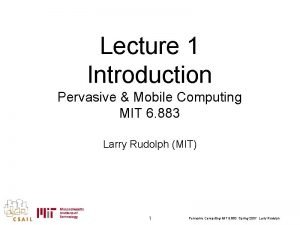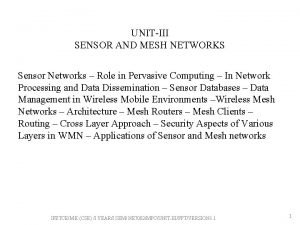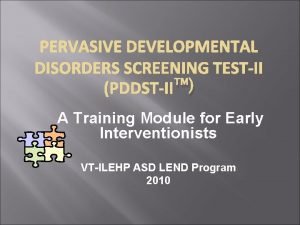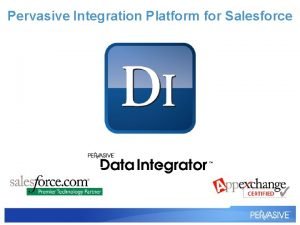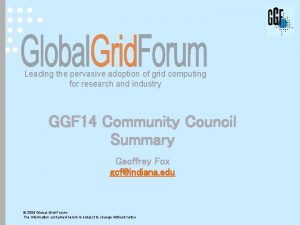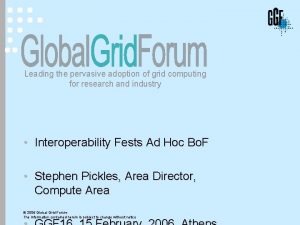Leading the pervasive adoption of grid computing for











- Slides: 11

Leading the pervasive adoption of grid computing for research and industry The DAIS-WG Specifications • Norman Paton • University of Manchester • (DAIS-WG Co-Chair) © 2005 Global Grid Forum The information contained herein is subject to change without notice

DAIS Specifications • A consistent set of interfaces to access data resources. • Partial virtualization/abstraction of the data resource: – Still need to know type of underlying data resource. – Data resource accessed using existing query language.

Specification Documents • Web Services Data Access and Integration – The Core (WSDAI) Specification, Version 1. 0 http: //forge. gridforum. org/tracker/index. php? aid=1711 • Web Services Data Access and Integration – The Relational Realisation (WS-DAIR) Specification, Version 1. 0 http: //forge. gridforum. org/tracker/index. php? aid=1712 • Web Services Data Access and Integration – The XML Realization http: //forge. gridforum. org/tracker/index. php? aid=1713 • Current status: – Recently completed Public Comment Period.

WS-DAI Specifications as Part of Data Profile WS-DAI Sets general pattern for realisations Extensions for specific kinds of data resource WS-DAIR WS-DAIX Relational SQL XML XQuery/XPath Possible Future Realisations

Interface types • Uses a classification of interface types: – Originally postulated in the OGSA Data Services document. – http: //forge. gridforum. org/projects/dais-wg/document/OGSA_Data_Services-ggf 10/en/. • Data description: – Provides properties that characterise the behaviour provided. • Data access: – Provides access to data through a service interface. • Data factory: – Provides service interface for the creation of derived data resources.

WS-DAI Specification • Defines: – Some base messages/operations: • Retrieve a property document. • Destroy relationship between a data service and a data resource. • Perform generic query. – Some base message exchange patterns for realisations to use. – Some resource-type-independent properties.

Data description • Elements in a properties document, extended in realisations. • Some may require explanation: – Dataset. Map: allows different return types to be supported. – Configuration. Map: configures data resources resulting from factory messages. Data. Resource. Abstract. Name Parent. Data. Resource. Management Concurrent. Access Dataset. Map Configuration. Map Language. Map Data. Resource. Description Readable Writeable Transaction. Initiation Transaction. Isolation Child. Sensitive. To. Parent. Sensitive. To. Child WS-DAI

Data description – relational extensions CIMDescription SQLProperty. Document Data. Resource. Abstract. Name Parent. Data. Resource. Management Concurrent. Access Dataset. Map Configuration. Map Language. Map Data. Resource. Description Readable Writeable Transaction. Initiation Transaction. Isolation Child. Sensitive. To. Parent. Sensitive. To. Child WS-DAI SQLResponse. Item. Sequence. Number SQLResponse. Item. Name Number. Of. SQLRow. Sets Number. Of. SQLUpdate. Counts Number. Of. SQLReturn. Values Number. Of. SQLOutput. Parameters Number. Of. SQLCommunications. Areas SQLResponse. Property. Document Row. Schema Number. Of. Rowset. Property. Document

Direct Access Consumer SQLExecute ( SQLExecute. Request ( Data. Resource. Abstract. Name, Dataset. Format. URI, SQLExpression. Parameters)) Database Data Service Relational. Description Readable, Writeable, etc Relational Schema, etc SQLAccess SQLExecute. Response ( SQLRow. Set, SQLUpdate. Count, SQLReturn. Value, SQLOutput. Parameter, SQLCommunications. Area) Relational Database

Indirect Access Consumer SQLExecute. Factory ( Relational SQLExecute. Factory. Request ( Data. Resource. Abstract. Name, Port. Type. QName, Data Service SQLAccess. Description ……, etc Configuration. Document, SQLExpression)) Relational SQLAccess. Factory Database SQLExecute. Factory. Response ( Reference (SQLResponse. Access)) SQLResponse Consumer SQLRowset. Factory( SQLRowset. Factory. Request( Data. Resource. Abstract. Name, port. Type. QName, Configuration. Document, Count)) Data Service SQLResponse. Description ……, etc SQLResponse. Factory SQLRow. Set. Selection. Factory. Response (Reference ( SQLRow. Set. Access)) Row. Set Consumer Get. Tuples ( Get. Tuples. Request ( Data. Resource. Abstract. Name, Start. Position, Count)) Data Service SQLRow. Set. Description ……, etc SQLRow. Set. Access Get. Tuples. Response ( SQLResponse (SQLRow. Set, SQLCommunications. Area)) Web. Row. Set

Potential Relevance to Virtual Observatories • For existing data models: – Provide a design for standard interfaces to Relational and XML databases. • Extensibility points: – Different data models and languages by extending WS-DAI in new specifications. – Different response formats, by advertising and selecting supported representations. – Different delivery mechanisms, by implementing data movement interfaces on response access services. • Designed to be usable alone and to combine effectively with other standards. • For specialised data models, WS -DAI provides a starting point for designs. • Advantages: – Many fiddly design decisions are made for you. – Examples exist for use as templates. – Consistent with other realisations: • Conforms to expectations. • Quicker learning. • Able to share implementation experiences and some code. • Disadvantage: – Need to follow the WS-DAI view of the world.
